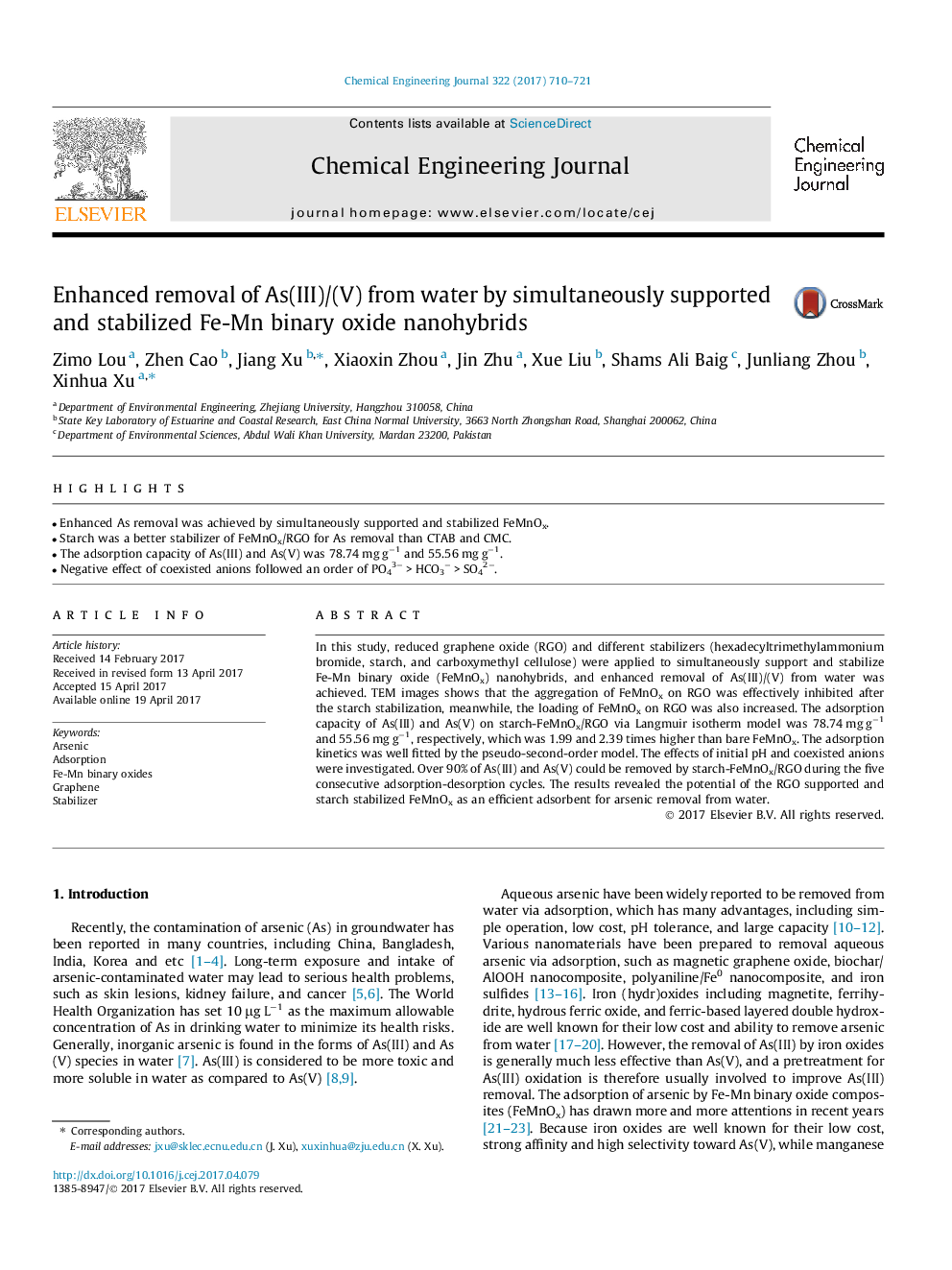| Article ID | Journal | Published Year | Pages | File Type |
|---|---|---|---|---|
| 6465681 | Chemical Engineering Journal | 2017 | 12 Pages |
â¢Enhanced As removal was achieved by simultaneously supported and stabilized FeMnOx.â¢Starch was a better stabilizer of FeMnOx/RGO for As removal than CTAB and CMC.â¢The adsorption capacity of As(III) and As(V) was 78.74 mg gâ1 and 55.56 mg gâ1.â¢Negative effect of coexisted anions followed an order of PO43â > HCO3â > SO42â.
In this study, reduced graphene oxide (RGO) and different stabilizers (hexadecyltrimethylammonium bromide, starch, and carboxymethyl cellulose) were applied to simultaneously support and stabilize Fe-Mn binary oxide (FeMnOx) nanohybrids, and enhanced removal of As(III)/(V) from water was achieved. TEM images shows that the aggregation of FeMnOx on RGO was effectively inhibited after the starch stabilization, meanwhile, the loading of FeMnOx on RGO was also increased. The adsorption capacity of As(III) and As(V) on starch-FeMnOx/RGO via Langmuir isotherm model was 78.74 mg gâ1 and 55.56 mg gâ1, respectively, which was 1.99 and 2.39 times higher than bare FeMnOx. The adsorption kinetics was well fitted by the pseudo-second-order model. The effects of initial pH and coexisted anions were investigated. Over 90% of As(III) and As(V) could be removed by starch-FeMnOx/RGO during the five consecutive adsorption-desorption cycles. The results revealed the potential of the RGO supported and starch stabilized FeMnOx as an efficient adsorbent for arsenic removal from water.
